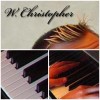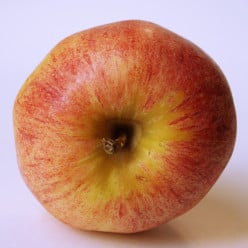Music Theory for Beginners - Intervals
This is a hub of mine of the same name, reposted here to get some music theory discussion happening.
What is an interval?
Intervals are the building blocks of scales, chords, riffs, solos, motifs, melodies, and of music itself. An interval is the distance between two notes.
Look at a piano keyboard. If you don't own a piano then find a picture of one online. Pick any key, black or white. Now pick any other key. There will be a name for the distance between those two keys. The precise name will vary depending on how you use that interval, whether or not you use it as part of a chord, and which chord you use it in. However, every interval is named with a number, and some description of it's value or function; for example the distance between the note C and the note E is a major third. These numbers can go as high as you like, but in practice we never go above thirteen, because the intervals just repeat after that point. This is because of the interval known as a Perfect Octave, usually just called an octave (there is no imperfect octave).
Octaves
An octave is unique as an interval because when you play an octave, you have really played the same note twice, just at a different pitch. The musical alphabet goes from A to G, and then starts again. All A's are the same, so are all B's and all C's etcetera. For example, let's use a chord. C major is a chord which is made of the notes C, E, and G. You can play these notes anywhere you like; you can play the C right at the top, E right at the bottom, and G somewhere between, or all of them high, or all of them low, it doesn't matter. As long as you've got a C somewhere, an E somewhere, and a G somewhere, you've got a C major chord, and it works just the same.
So as an example of why you don't need more than thirteen interval names, the interval from C to G is called a Perfect Fifth. If you play the G an octave up, you could call the interval a "perfect twelfth", but there would be no point, because it sounds like a fifth, it functions like a fifth, and for all intents and purposes it IS a fifth, so we name it as such.
The reason why we go as high as thirteen instead of stopping at eight (which would be the octave, oct = eight), is more complicated and relates to chord construction, and is for another day.The Names of the Intervals
Intervals are names after the distance from the lower note to the higher note, and it is expressed in terms of how many notes of the major scale* you would have to play, starting on the lower note, until you reached the higher note. For example let's go back to the interval of a sixth. When you play two notes which are a sixth apart, what this means is that if you started playing the major scale from the lower note, then the sixth note you reached would be the higher note of your interval. For this hub we will only use numbers two through seven, and the octave.
The numerical value of an interval is only half the story however. There are two characteristics of an interval: quality and quantity. Let's again return to our interval of a sixth. We already have the quantity; the quantity is how many notes of the major scale it is from the lower note. Quality refers to it's position more precisely; a major sixth sounds different from a minor sixth. Up until now I have referred to the distance between the notes in terms of the major scale, but what if you are playing the minor scale? Suddenly your sixth is a different distance away, but it's still six notes of the scale away. This is because the major scale contains a major sixth, and the minor scale contains a minor sixth. A major sixth is the distance of nine semitones, whereas a minor sixth is the distance of eight semitones.
So let's zoom out for a moment and take an overall look at all of our naming options for both quantity and quality.
Quantity: second, third, fourth, fifth, sixth, seventh, octave
Quality: major, minor, diminished, augmented
We have run into some new terms now in the quality list: diminished and augmented. We will learn the origin of these terms later, but for now here is a simple chart which shows how the quality terms apply to the quantity terms, because not every combination makes musical sense (and I don't mean "sounds bad", I mean if you use these terms incorrectly, you will end up stating impossible information).
Lets start with the major scale (which we will learn about in more detail later). Every interval in the major scale is major, except for the perfect intervals (the fourth, the fifth, and the octave). If we flatten (lower in pitch by one semitone) any major interval, it becomes a minor interval. If we flatten a minor interval, it becomes a diminished interval. This is as low as you can go. If we sharpen (raise in pitch by one semitone) a diminished interval we get a minor interval, if we sharpen minor we get major, and if we sharpen a major interval, we get an augmented interval.
The exceptions to this process are the perfect intervals. These are the fourth, the fifth, and the octave. When dealing with these intervals, you don't apply the labels of major or minor. Instead you just refer to them as a perfect fourth, a perfect fifth, or a perfect octave (usually just called octave). When you flatten a perfect interval it becomes diminished, and if you sharpen a perfect interval it becomes augmented.
All Intervals Named
For those of you who enjoy such things, I am going to list every interval within one octave. There are a few more intervals which are theoretically possible, but are not really of much use, so I'll stick to the ones that you might actually see written somewhere.
Minor Second, Major Second, Augmented Second
Diminished Third, Minor Third, Major Third, Augmented Third
Diminished Fourth, Perfect Fourth, Augmented Fourth
Diminished Fifth, Perfect Fifth, Augmented Fifth
Diminished Sixth, Minor Sixth, Major Sixth, Augmented Sixth
Diminished Seventh, Minor Seventh, Major Seventh
Perfect Octave
The Sound of Intervals
It is good practice to learn what the different intervals sound like, so for each interval I'm going to give you a famous tune which starts with that interval. I'm not going to give separate tunes for pairs of intervals such as the major sixth and the diminished seventh because they sound the same, and only hold different names for theoretical reasons. Instead I will give one tune to illustrate both intervals.
Minor Second: Jaws
Major Second: Happy Birthday
Minor Third: Greensleeves
Major Third: When The Saints Go Marching In
Perfect Fourth: Amazing Grace
Diminished Fifth: The Simpsons
Perfect Fifth: Star Wars
Minor Sixth: Love Story
Major Sixth: My Way
Minor Seventh: There's A Place For Us (from the musical West Side Story)
Major Seventh: Superman Theme
Octave: Somewhere Over The Rainbow
*The major scale is explained in another hub.Yes, this is all fine, but only makes sense to people who already know it. People who don't already know it won't have a clue what you're on about. Agree?
(p.s. Greensleeves is a minor third opening in every version I've heard)I agree, Paraglider. Maybe he should break it down a little more. Possibly with half steps & whole steps... just a thought though.
What are we supposed to discuss? For the record, I don't think you want to make a habit of reposting hub text in the forums. It does your hub more harm than good, and the threads will rarely take off as a discussion. In light of this, if you'd like me to snip the text from your posts above, I'd be happy to.
Very true! Fact checking fail on my part.
Don't worry, this'll be the only time I do. This forum just seemed a bit empty and I just wanted to get some people through the door so to speak. Feel free to snip away .
.
Paraglider; I'd love to know what else you think should be changed apart from assuming too much knowledge, such as the musical alphabet etc.
This is partly a way for me to organize my thought and information so I can use it in lessons. Maybe a section on tones and semitones as Chris suggested.
No, no, it's up to you.
On topic, I started out playing classical piano, which stood me in very good stead when I took up the bass guitar (which is what I now play). I really think piano is one of the best ways to learn music theory, and that all musicians should study it to some extent. The keyboard is a very easy way to visualize concepts that might otherwise seem very abstract.Well, I would tend to stick to one topic per hub. For example, I devoted one hub each to learning the fingerboard (on classic guitar), equal temperament tuning, and the cycle of fifths.
By the way, Love Story starts on the descending m6 interval. I've only ever found one well known song that starts on an ascending m6, and it's not so well known any more - that's Sinatra's 'A Day in the Life of a Fool'. Can you think of any more?
I was at a rap concert recently, and during the intervals there was some shooting going on in the back rows.
(not sure if this is exactly on topic... I failed clarinet class in the 7th grade)I was wondering as well what we should comment on - although I could use some help with my music theory since I am more than a bit rusty!
I started out on the piano at 4-1/2, then added the accordion and finally the clarinet. Now it is just the piano and I am happy to report that at age 56+, I can still play. I was brought up on the classics and it never leaves you - however, the theory does to some extent if you don't keep at it.
Informative and I will check back to see if we got a rousing discussion going on techniques of HOW to remember or memorize music theory. I do believe that it is best suited to the piano just because you seem to be able to visualize it better (or at least I do).Yoo-hoo!! Fellow musicians - I have just (literally just) published a Hub on writing transpositions, and I've got a couple more in the works also about transposing - one using the Circle (Cycle) of Fifths (Fourths) as a transposing tool. These last two are not published yet, but should be in a day or two. In one of the not-yet-published ones I've included a chart of half-steps, along with interval-to-half-step conversions. I'm really excited about this one, because I enjoy a bit of geekiness along with music.
In a couple of my music Hubs, I have linked to you two, Dgerrimea and Paraglider.
As for songs that begin with the asc. m6, the best one I know is an old spiritual "Let My People Go" (When Israel was in Egypt land....) But I've also seen people point out that "Love Story" begins with the desc. m6, immediately followed by the asc. m6.
Right now I'm trying to find currently popular songs (rock, pop) that give clear examples of intervals - although not necessarily as the opening interval. Suggestions, anyone?Dgerrimea, I'll admit that when I was writing my most recent Hubs, I reviewed this one of yours that you have posted. I had read it before, and I wanted to be sure that I was not duplicating your material, even though I guess there will always be a certain amount of overlapping when we're talking about music theory.
Anyway, I noticed then (this recent time of re-reading it) and also now (here in the forum) just how much I like the opening paragraphs you wrote - your explanation of what intervals are and the way the notes of a triad can be in any order. I really like the Hub very much - but I guess I do get a little bit glassy-eyed when you get to the point of naming options for quality and quantity.
That might be a place where you could split this Hub - make a summary paragraph for the preceding material to end hub 1, then open the next section (becoming a new hub) with a brief summary of what you explained in the first hub.
I also wonder whether students at this level, just starting to learn about intervals, would really need to know about diminished and augmented intervals just yet? I think that subject alone could be a separate hub.I really wish I could take credit for that one (asc.m6). I found it when I was doing some research on interval tunes recently, and I came up with a list (consolidating other people's lists) that includes 2-3 choices for nearly every interval, ascending and descending.
The descending intervals are exceptions. [EDIT: Several of them only have one example, not 2-3.] Do any of you know of some good examples of descending tritone/aug4/dim5 (besides European siren), desc. m6, and desc. m7?
Also.... I'm still eager to get good suggestions for intervals from current popular music. The ones I don't have yet are asc. M3, tritone, and M7; desc. tritone, m6, m7, M7. (It's okay with me if they are not the opening notes, as long as they are clearly identifiable.)There are quite a few professional music teachers, performers and composers on HP. I've been in contact with a few here and there. It actually does help traffic if a well written hub is linked to other well written hubs of similar or related topic. I've written only a few technical hubs about music theory, reading and transposition, but also written about how to publish music, etc.
The information is strong, Dgerrimea, but if I could offer the idea that you also include visual examples of what you're writing about, it will help your readers quite a bit in remembering and retaining the info.
Here's a side note about "Greensleeves" that I find fascinating. The tune was originally written in Dorian mode, which is minor scale with a raised 6th tone. (In D minor, this would be a B natural instead of B flat). However, over time, as modal music became obsolete and tonal music became the norm, the tune was then changed to a strict minor scale, thus lowering the 6th degree to a B flat. If you play the tune in Dorian mode, it suddenly makes it a very bright and charming piece that a minor key destroys all together. When I have conducted choirs and orchestras performing this piece, I've always preferred the Dorian mode version.
What a thrilling piece of information, Daniel! I wish I had a piano in front of me now to try it out!!!You know, with a little added history, it might make a good hub. I'll have to get my writing cap back on. I haven't had time to write hubs for a long time....
There's also a rumour that it was written by Henry VIII, but that's almost certainly false, even though Henry when young was an accomplished lutenist and singer. On the other hand, 'Pastime with Good Company' may very well have been by Henry himself.
@Aficionada: If I do write the hub, I'll let you know. We may want to consider a little reciprocal linking of hubs. You're a very clear writer on music theory. The last avatar I put up was because of pressure from friends. LOL. They thought that since I'm over 50, a new grandpa, that I should "flaunt" a little for summer. A few days was all I could stand. Much better avatar for me....
@Paraglider: I actually knew that Greensleeves was attributed to Henry VIII, but it just seemed so doubtful. Although as you point out that he probably did write other pieces, there is much elegance in Greensleeves that seems to be vacant in some other attributions. It might be that a court musician or friend wrote it for him, and as a gift attributed it to him. Don't know. Just not enough info on that one.
Intriguing stuff, though.LOL - avatar story.... And Thanks! I'll take a few moments later today (maybe tomorrow, there's a funeral today) to post in this thread the links I already have created. I'm planning to break some of the lesser links to inactive Hubbers that I created early on in my Suggest Links Tool over-exuberance.

I don't know if this following little factoid would fit in with your potential Hub in any way, but I ran across it some years ago when I was researching the topic of "folk songs." (I had never considered exactly what a folk song is or how it got started.) One of the theories I encountered was that all (most? some?) folk songs actually originated as court music written and performed by trained/paid musicians, and that they trickled down (perhaps through servants at court?) to the countryside, where they were embraced and revised through use by the populace at large. Obviously I'm not doing this theory justice, but it seems like a fascinating possibility, and I think of it every time I hear/read/sing different versions of a popular song.A very good example of what you describe in America is the Appalachian folk song tradition. Most of the folk songs there originated from the UK, and were, over time adapted, modified, etc., based on memory of the piece. So there are great similarities and differences between the Appalachian versions and the UK versions.
I think there is some truth to this idea of court music going to the masses, but it also worked in reverse. When towns people got together in pubs, etc., they drank and danced and sang. Some of THOSE pieces made it to royal courts. Another reasons why it would be very difficult to ascertain the veracity of who actually authored Greensleeves.Very cool and fascinating! I really hope you'll find the time to write a Hub about this. I think a lot of people would be quite interested, especially since Greensleeves is so widely known.
I would love to link that to my Hubs on Modes, if you do write it, Daniel. (PS - You keep changing your avatar! Is that just one side of your creativity expressing itself here?)
They - these Hubs - need a lot of tweaking, and I really will get around to that. I'm really excited because I have just learned how to make a movie with sound, which I can add in a video capsule. It takes longer than it should (I hope that will change with experience), but I'm pretty psyched about it. I think adding sound when discussing modes will be a good thing, don't you agree?
I'm also holding my breath because I have just now published one of the Hubs I mentioned above. I don't know how useful it actually is, but it is a lot of fun for people who like to mix geekiness with their music.


I'm following up here on something I wrote last week.
I spent a lot of time reviewing the links I already have to my own Hubs on music. It was actually time well spent, because I need to tweak those links anyway. In several Hubs I had created multiple links to one or more other Hubs; now I plan to trim them back somewhat. Most of my multiple links relate to the circle/cycle of fifths, learning to read music quickly, and musical intervals.
Originally I planned to list here several of the links I have, but based on my question and the answers to it in another forum topic/thread, I now realize it's best not to do that.
Related to my comment last week about locating musical intervals in well-known popular music, I will add that I am also looking for samples of intervals in Christmas carols (specifically religious ones for now, but possibly secular Christmas songs later) for a Hub that I'm just now starting. I have the most obvious intervals already, but I would welcome suggestions for some of the obscure ones (M7 asc.& desc.; tritone asc.).
Believe it or not, I have found one example of a tritone in a lesser-known Puerto Rican Christmas song ("From a Distant Home"). I think it is technically an augmented fourth(?), but I should probably leave it to Dgerrimea to sort that out. The song is in Dm; the melody note moves from high (soprano) E with an A7 chord to the next lower Bb with a Gm chord.
The song is in Dm; the melody note moves from high (soprano) E with an A7 chord to the next lower Bb with a Gm chord.I've managed to put up a post that simplifies music theory for the beginner. I teach a lot of kids that want to get into production or beatmaking, which essentially is music composition. Theory is often a stumbling block, but necessary for their growth. So I've taken a popular song and broke it down to the chord progressions. If some of you guys can take a look at it and let me know what you think...if it's helpful, or totally awful, I'd like to know. It's not too heavy on the theory, but it does talk about chords, melodies, and different instruments. Thanks.
St PaulJust found this topic, and I can see that I have a few Hubs to check out!
FWIW, I've always preferred the Dorian version of "Greensleeves" as well.
Related Discussions
- 12
What is the Difference Between a Scale and a Mode?
by 6 String Veteran 13 years ago
The answer to this question has evaded many a student (and teachers) of music.What's your answer?-6SV
- 6
Music Theory for Beginners
by Dgerrimea 14 years ago
I'v been posting a few hubs called Music Theory for Beginners in which I explain music theory without assuming that the reader knows anything about it.If anyone has any theory-related questions, or is just up for a general music related chat, message me and I'll be happy to reply.
- 3
What is the perfect distance between the subject and the lens for taking a passp
by TANJIM ARAFAT SAJIB 11 years ago
What is the perfect distance between the subject and the lens for taking a passport size photo?I need a passport size of mine to submit that in a company. But immediately I have no passport size photo. I have to take the photo at home now.
- 8
Music Theory Q&A
by Dgerrimea 13 years ago
I noticed there doesn't seem to be much knowledge being contributed to the music theory forums, so I will offer this thread as a place for anyone to ask me anything about music and I'll give you the best answer I can. I'm no expert, but I know enough that can help someone who wants to understand...
- 4
guitar soloing in c major
by Rudy Herdyantio 13 years ago
I will try to explain how to play solo with easy.for the beginning I will start on the scale of C major(C-d-e-f-g-a-b-c). before I explain the steps of the tone,I will explain the basic formula of the major scale itself :1 - 1 - 1/2 - 1 - 1 - 1 - 1/2 thing to remember this formula because is very...
- 2
How Do I Calculate The Distance Between A Degree Of Latitude And Longitude?
by ngureco 13 years ago
How Do I Calculate The Distance Between A Degree Of Latitude And Longitude?















